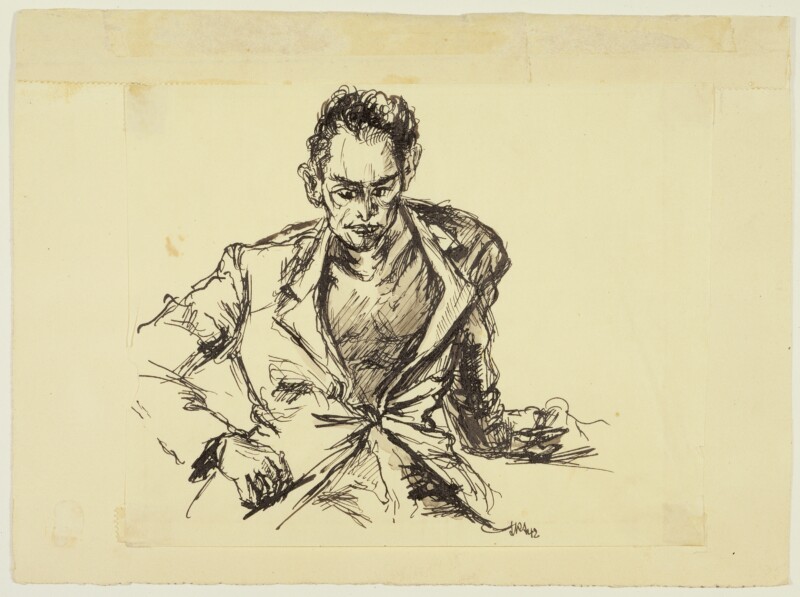“Mon oncle est l’un des premiers Espagnols arrivés ici. C’est pas la vie rêvée quand on s’en va de ses racines. Il ne savait pas écrire et bien sûr pas parler français. Il avait juste une adresse à la Montjoie, chez la famille Serrano. Il est arrivé gare d’Austerlitz avec un ami de son village ; comme bagage, ils portaient des sacoches de cheval en travers de l’épaule. Il m’a raconté qu’à la gare, les gens les regardaient comme des Martiens, qu’ils essayaient presque de les toucher. […] Ma mère ne savait ni lire ni écrire. Dans le métro, elle se repérait en comptant les stations et en prenant des points de repère visuels.”
“My uncle was one of the first Spaniards to arrive here. It’s not the life you dream of when you leave your roots. He couldn’t write and, of course, he couldn’t speak French. He just had an address in La Montjoie, at the Serrano family’s house. He arrived at the Austerlitz train station with a friend from his village; as luggage, they carried saddlebags across their shoulders. He told me that at the station people looked at them like Martians, almost trying to touch them. […] My mother could neither read nor write. In the subway, she could find her way around by counting the stations and taking visual cues.”
In the first half of the 20th century, the so-called “Little Spain” emerged in the Parisian suburb of La Plaine Saint-Denis. In 1931, Spaniards made up the largest migrant community in La Plaine Saint-Denis with 4.5 percent of the total population.
Various Spanish migrants had settled in Saint-Denis, Saint-Ouen and Aubervilliers in the course of three distinct migratory movements. So-called “economic migrants” shaped the decade of the 1920s, among them Fé Garcia Petit’s uncle. After the uprising in Asturias was crushed at the end of 1934, political refugees in particular began to arrive in the Parisian suburbs, and their number rose to about 1.5 million by 1950 after the defeat of the Republican camp in the Spanish Civil War in 1939. Another generation of Spanish “economic migrants” followed between 1955 and 1970.
The connection back to Spain remained intact for many even after their migration. For example, when the Civil War (1936-1939) raged in Spain, some ethnic Spanish men aged 18 to 46 left the Plaine Saint-Denis to return to Spain to fight in the Republican camp. Those who stayed in “Little Spain” organized support networks for communists or anarchists.
The reception experience for Spanish migrants differed according to the French migration regime. The latter in turn changed with the economic and political situation in France but exclusion and discrimination dominated the lives of many no matter when they arrived. For example, when, in early 1939, Spanish republican refugees from the Civil War exited for France, many of whom migrating to Paris and the surrounding areas, it became all too obvious that France had changed from a country of refugees to a country of forced transit. For although the French authorities had been very well prepared in the late 1930s to accept Spanish civil war refugees “humanely,” domestic, foreign policy and economic developments obviously spoke against this: immigration was to be severely restricted under the right-wing government of Édouard Daladier, making it more difficult for refugees to remain in France.
Interview excerpt with Mrs. Fé Garcia Petit, conducted by Natacha Lillo, lecturer in Spanish Civilisation at the University of Paris-Diderot (Paris 7), on March 9, 2001 in Garges-les-Gonesses.
Natacha Lillo, La Petite Espagne de la Plaine Saint-Denis (Paris: Autrement, 2004).
Translation into English © Minor Kontor.









